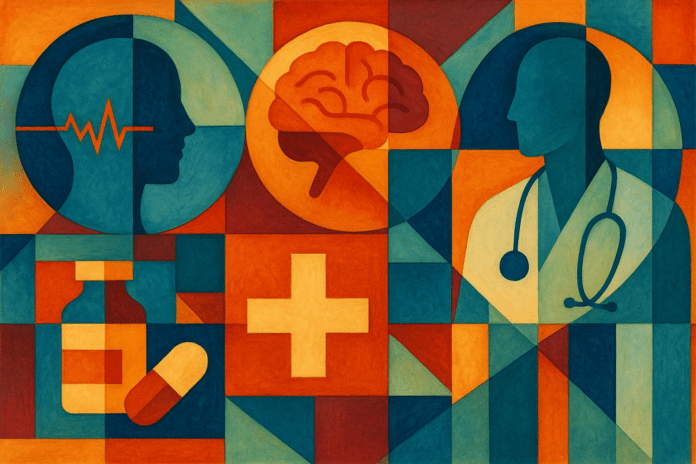For decades, predictive models in medicine have focused on single outcomes: ten-year cardiovascular risk, fracture probability, oncological scoring systems. The idea of simultaneously modeling the future incidence of hundreds of conditions, along coherent temporal trajectories, seemed closer to science fiction than clinical practice.
With Delphi-2M, this scenario is becoming real. The international team behind the Nature paper demonstrates how a generative transformer, adapted from natural language to clinical data, can learn the sequence of diagnoses, the time between events, and even the likelihood that different diseases will cluster or influence each other.
The leap is not only technical but conceptual: instead of a static risk snapshot, Delphi-2M delivers a dynamic natural history of health, where age, sex, BMI, lifestyle habits, and past medical history interact within an evolving network.
The Numbers Behind Delphi-2M
-
400,000 patients from the UK Biobank fed the training phase.
-
1.9 million individuals from Danish national health registries provided external validation.
-
Over 1,000 ICD-10 diagnostic categories included, spanning metabolic, infectious, neurological, and oncological conditions.
-
Up to 20-year time horizon, with predictive performance (AUC) ranging from 0.67 to 0.76 depending on dataset.
In other words, the model does not just “recognize patterns” but can generate entire trajectories — as if drafting a patient’s medical record in advance.
Beyond the Technical Proof: Implications
Personalized Medicine
Perhaps the most fascinating aspect is the ability to move from broad population risk to individualized forecasts. No longer “a 65-year-old man with diabetes has X% cardiovascular risk,” but “this individual, with this medical history and this profile, is likely to face metabolic complications in the next decade, followed by a cardiovascular episode, then an increased risk of mortality.”
This opens the door to a decision support system closer to clinical reasoning, where therapeutic options could be virtually tested along simulated paths.
Prevention and Public Health
Scaled to large cohorts, Delphi-2M could become a tool for anticipating future healthcare burdens: fractures, renal failure, cancer incidence, all projected not only as aggregate epidemiology but as interconnected disease progressions.
For healthcare systems, this means targeted resource planning, more rational allocation of budgets and infrastructures, and the ability to anticipate challenges related to aging populations or chronic disease epidemics.
Pharma Industry and Clinical Research
For life sciences, mapping disease trajectories offers strategic advantages. From drug development to clinical trial design and patient stratification, such a model could cut costs and accelerate identification of high-risk subgroups or those with unique trajectories.
Consider phase III trials, where patient selection is crucial: the ability to simulate outcomes in advance reduces uncertainty and boosts chances of success.
Limits and Cautions
Every technological promise comes with caveats.
-
Data bias: UK Biobank participants tend to be healthier and more homogeneous than the general population, limiting generalizability.
-
Missing data: biomarkers, imaging, and pharmacological treatments were not included, leaving predictions incomplete.
-
Risk of determinism: there is a danger of treating trajectories as inevitable. Yet the model identifies temporal associations, not causality.
-
Ethical concerns: who controls predictions about the future health of millions? How can patients be protected from insurance or employment discrimination?
The Cultural Impact on Care
Beyond science and technology, Delphi-2M raises deeper questions.
What does it mean for a physician to face simulated trajectories of a patient’s life? How does the conversation change when the patient is no longer told “you have a 20% risk” but given a detailed narrative of their possible clinical future?
The doctor–patient relationship risks shifting toward a predictive dimension that may increase anxiety but also empower individuals. Correct use of such tools will require digital literacy, ethical training, and clear guidelines.
Conclusions
The Nature study marks a watershed moment. Delphi-2M is not yet ready for everyday clinical practice, but the signal is clear: the medicine of the future will not only diagnose and treat but also narrate probabilistic health trajectories.
For public health, the pharmaceutical industry, and research, the potential is enormous: from personalized prevention to healthcare management and accelerated drug development.
The challenge now is to balance innovation with prudence and ethics, to ensure that this paradigm shift leads to a medicine that is not only more predictive but also more equitable.
References: Shmatko, A., Jung, A.W., Gaurav, K. et al. Learning the natural history of human disease with generative transformers. Nature (2025).


